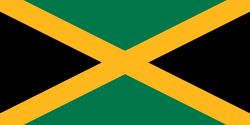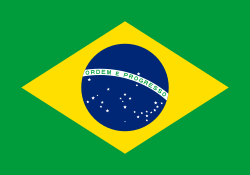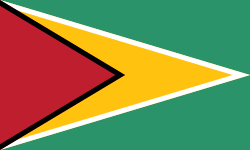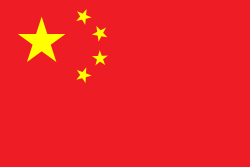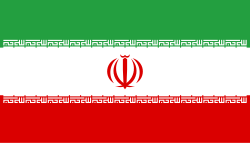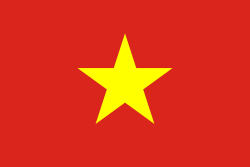Bauxit


Bauxit, med kemiska formeln AlOx(OH)3∓2x[1], från franskans bauxite efter att först ha hittats i Les Baux-de-Provence i södra Frankrike, är en lerliknande, rödbrun jord- eller bergart med korniga eller leriga massor, ur vilken aluminium, koppar och järn kan utvinnas. Jordarten består huvudsakligen av aluminiumhydroxidmineraler som innehåller järnsalter, såsom böhmit, diaspor eller gibbsit.[2][3]
Bauxit är en mycket vanlig jordart. Den bildas av olika bergarter, såsom granit som innehåller mycket aluminium och inte järn som många tror, vittrar sönder och blandas ihop till en aluminiumhaltig lera. Vittringen kallas för lateritbildning, och där förs de flesta beståndsdelarna i bergarten bort med grundvattnet. Bauxiten är ett svårlösligt aluminiumhydroxid, och är då en rest när övriga mineraler förts bort. Bauxit innehåller mellan 25 och 55 viktprocent av aluminium. Det innehåller även några få procent kisel, järn och titan. 1990 var utvinningen av bauxit på 115 miljoner ton. Det förekommer bland annat i Västafrika och i Sydamerika och i Australien; främst i tropiska och subtropiska områden. Australien står för ungefär 31 procent av utvinningen.[2] Bauxit används till framställning av aluminium och föreningar med aluminium, samt vid tillverkning av högeldfasta lergods.[3]
Produktionstrender

2007 var Australien en av topproducenterna av bauxit med omkring en tredjedel av världsproduktionen, följt av Kina, Brasilien, Guinea och Indien. Även om efterfrågan på aluminium snabbt ökar är de hittills kända bauxitmalmsreserverna tillräckliga för att klara av världens efterfrågan på aluminium i flera hundra år. Samtidigt medför en ständigt ökande grad av återvinning av aluminium, vilket främst görs för att minska elförbrukningen vid aluminiumtillverkning, att de kända bauxitreserverna kommer att räcka mycket längre än man tidigare trott.
| Land | Gruvproduktion | Reserver | Reservgrund | |
|---|---|---|---|---|
| 2007 | 2008 (Uppskattat) | |||
| 18 000 | 18 000 | 7 400 000 | 8 600 000 | |
| 62 400 | 63 000 | 5 800 000 | 7 900 000 | |
| 30 | 30 | 2 100 000 | 5 400 000 | |
| 14 600 | 15 000 | 2 000 000 | 2 500 000 | |
| 24 800 | 25 000 | 1 900 000 | 2 500 000 | |
| 19 200 | 20 000 | 770 000 | 1 400 000 | |
| 1 600 | 1 600 | 700 000 | 900 000 | |
| 30 000 | 32 000 | 700 000 | 2 300 000 | |
| 2 220 | 2 200 | 600 000 | 650 000 | |
| 4 900 | 4 500 | 580 000 | 600 000 | |
| 4 800 | 4 800 | 360 000 | 450 000 | |
| 5 900 | 5 900 | 320 000 | 350 000 | |
| 6 400 | 6 400 | 200 000 | 250 000 | |
| – a) | – a) | 20 000 | 40 000 | |
| – | 500 [5] | – | – | |
| Andra länder | 7 150 | 6 800 | 3 200 000 | 3 800 000 |
| Totalt i hela världen (avrundat) | 202 000 | 205 000 | 27 000 000 | 38 000 000 |
a) USA:s gruvbrytning nästan obefintlig.
Källor
- Den här artikeln är helt eller delvis baserad på material från engelskspråkiga Wikipedia, tidigare version.
- Bauxit, hämtat från Nationalencyklopedins nätupplaga. Läst 2010-09-21.
Noter
- ^ X kan variera mellan 0 och 1.
- ^ [a b] Nationalencyklopedins nätupplaga, under uppslagsordet.
- ^ [a b] Bauxit i Nordisk familjebok (andra upplagan, 1904)
- ^ U.S. Geological Survey, Mineral Commodity Summaries, januari 2009
- ^ http://www.bgs.ac.uk/mineralsuk/commodity/world/home.html
Media som används på denna webbplats
Flag of Jamaica. “The sunshine, the land is green, and the people are strong and bold” is the symbolism of the colours of the flag. GOLD represents the natural wealth and beauty of sunlight; GREEN represents hope and agricultural resources; BLACK represents the strength and creativity of the people. The original symbolism, however, was "Hardships there are, but the land is green, and the sun shineth", where BLACK represented the hardships being faced.
Flag of Iran. The tricolor flag was introduced in 1906, but after the Islamic Revolution of 1979 the Arabic words 'Allahu akbar' ('God is great'), written in the Kufic script of the Qur'an and repeated 22 times, were added to the red and green strips where they border the white central strip and in the middle is the emblem of Iran (which is a stylized Persian alphabet of the Arabic word Allah ("God")).
The official ISIRI standard (translation at FotW) gives two slightly different methods of construction for the flag: a compass-and-straightedge construction used for File:Flag of Iran (official).svg, and a "simplified" construction sheet with rational numbers used for this file.
Författare/Upphovsman: BlueBreezeWiki, Licens: CC BY-SA 3.0
Bauxite, Les Baux-de-Provence
Författare/Upphovsman: en:User:Anwar saadat, Licens: CC BY-SA 3.0
This bubble map shows the global distribution of bauxite output in 2005 as a percentage of the top producer (Australia - 59,959,000 tonnes). This map is consistent with incomplete set of data too as long as the top producer is known. It resolves the accessibility issues faced by colour-coded maps that may not be properly rendered in old computer screens. Data was extracted on 3rd June 2007. Source - British Geological Survey http://www.bgs.ac.uk/mineralsuk/commodity/world/home.html Based on Image:BlankMap-World.png
Bauxite

